Kerala model
The Kerala model of development is a model of development based on the practices adopted in the state of Kerala, India. It is characterized by achievements in social indicators such as education, healthcare, high life expectancy, low infant mortality and low birth rate, by the creation of productive social infrastructure rather than materialistic infrastructure. Kerala has achieved material conditions of living, reflected in indicators of social development comparable to those of developed countries, even though the state's per capita income is low.[1] These achievements along with the factors responsible for such achievements have been considered characteristic results of the Kerala model.[1][2]
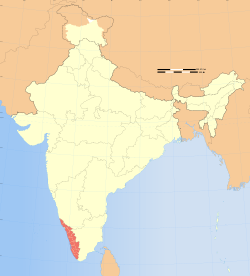
More precisely, the Kerala model has been defined as:
- A set of high material quality-of-life indicators coinciding with low per-capita incomes, both distributed across nearly the entire population of Kerala.
- A set of wealth and resource redistribution programmes that have largely brought about the high material quality-of-life indicators.
- High levels of political participation and activism among ordinary people along with substantial numbers of dedicated leaders at all levels. Kerala's mass activism and committed cadre were able to function within a largely democratic structure, which their activism has served to reinforce.[2]
History
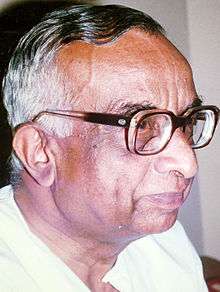
The Centre for Development Studies at Thiruvananthapuram with the help of United Nations, conducted a case study of selected issues with reference to Kerala in the 1970s as a part of their study . The results and recommendations of this study came to be known as the 'Kerala model' of equitable growth which emphasised land reforms, poverty reduction, educational access and child welfare. Economy professor K. N. Raj was the main person behind this study. He started the Centre for Development Studies in Thiruvananthapuram in 1971, by the request of the Kerala Chief Minister C Achutha Menon.[3][4]
The Kerala model is markedly different from the conventional development thinking which focusses on achieving high GDP growth rates. However, in 1990, Pakistani economist Mahbub ul Haq changed the focus of development economics from national income accounting to people centered policies. To produce the Human Development Report (HDRs), Haq brought together a group of well-known development economists including: Paul Streeten, Frances Stewart, Gustav Ranis, Keith Griffin, Sudhir Anand, and Meghnad Desai.
In collaboration with Raj's close colleague, Indian economist Amartya Sen, he persuaded the UNDP to carry out work on Human Development Indicators (HDIs), which started playing a large role beside GDP in the framing of development policies. Another decade down the road, the Millennium Development Goals, embracing many of the Kerala Model's features – with the notable omission of land reforms – became the new charter of development. Raj's seminal contribution to development policy thus had worldwide repercussions.[3][4]
In 1970
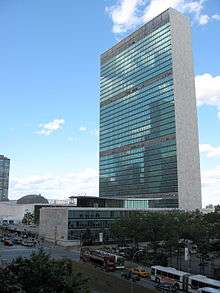
The economists noted that despite low incomes, the state had high literacy rates, healthy citizens, and a politically active population. Researchers began to delve more deeply into what was going in the Kerala Model, since human development indices seemed to show a standard of living which was comparable with life in developed nations, on a fraction of the income. The development standard in Kerala is comparable to that of many first world nations, and is widely considered to be the highest in India at that time.
Despite having high standards of human development, the Kerala Model ranks low in terms of industrial and economic development. The high rate of education in the region has resulted in a brain drain, with many citizens migrating to other parts of the world for employment. The job market in Kerala is forcing many to relocate to other places.
Human Development Index
In 1990
From 1990 onwards, the United Nations came with the Human Development Index (HDI). This is a composite statistic used to rank countries by level of "human development" and separate developed (high development), developing (middle development), and underdeveloped (low development) countries. The statistic is composed from data on Life Expectancy, Education and per-capita GDP (as an indicator of Standard of living) collected at the national level using a formula. This index, which has become one of the most influential and widely used indices to compare human development across countries, give Kerala Model an international recognition. The HDI has been used since 1990 by the United Nations Development Programme for its annual Human Development Reports. From the starting of this index, Kerala has scored high, comparable to developed countries.
Reasons
Health care
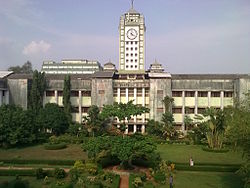
The basis for the state's impressive health standards is the statewide infrastructure of primary health centres. There are over 3,300 government and private medical institutions in the state, with 297 beds per 100,000 population, the second highest in the country (after Karnataka).[7] With virtually all mothers taught to breast-feed, and a state-supported nutrition programme for pregnant and new mothers, infant mortality in 2011 was 12 per thousand, compared with 91 for low-income countries generally.[8][9] In Kerala the birth rate is 40 per cent below that of the national average and almost 60 per cent below the rate for poor countries in general. In fact, a 1992 survey found that the birth rate had fallen to replacement level.[10] Kerala's birth rate is 14 per 1,000 females and falling fast. India's rate is 25 per 1,000 females and that of the U.S. is 16. Its adult literacy rate is 94.59 per cent compared to India's 74 and the US's 99. Life expectancy at birth in Kerala is 75 years compared to 64 years in India and 77 years in the US. Female life expectancy in Kerala exceeds that of the male, just as it does in the developed world.,[11] Kerala's maternal mortality rate is :Total: 1.3 deaths/1,000 live births (1990), lowest in India.[12]
District-wise details of health care institution and beds for as per the 1991 census[13]
| District | No of Health Care Institutions | Number of beds |
|---|---|---|
| Alappuzha | 343 | 8,835 |
| Ernakulam | 676 | 21,819 |
| Idukki | 194 | 4,096 |
| Kannur | 392 | 5,149 |
| Kasaragod | 209 | 2,107 |
| Kollam | 704 | 12,530 |
| Kottayam | 440 | 9,323 |
| Kozhikode | 342 | 9,034 |
| Malappuram | 327 | 5,030 |
| Palakkad | 316 | 4,925 |
| Pathanamthitta | 310 | 5,096 |
| Thiruvananthapuram | 1011 | 73,410 |
| Thrissur | 602 | 19,891 |
| Wayanad | 127 | 2,307 |
| Total | 5,993 | 183,552 |
According to a white paper on the Quality of Death, released by the Economist Intelligence Unit in 2010, has projected the community model healthcare system from Kerala as a beacon of hope for providing palliative care services. The report from 'The Economist' has ranked 40 countries across the world on end-of-life care facilities on the basis of 24 indicators on healthcare environment and availability, cost and quality of care. In the overall score, India with a score of 1.9 out of 10 ranked the 40th, behind countries such as Slovakia, Malaysia, Turkey, Brazil and even Uganda. UK topped the list followed by Australia and New Zealand.[14][15]
While India ranks at the bottom of the Index in overall score, and performs badly on many indicators, Kerala, if measured on the same points, would buck the trend. With only 3% of India's population, the tiny state provides two-thirds of India's palliative care services. The Economist has lauded the 'Kerala Community Model' in healthcare. Moreover, The Economist has patted the Kerala Government for providing palliative care policy (It is the only Indian state with such a policy) and funding for community-based care programmes. Kerala had pioneered Universal health care through extensive public health services.[16][17] Hans Rosling also highlighted this when he said Kerala matches United States in health but not in economy and took the example of Washington, D.C. which is much richer but is less healthy compared to Kerala.[18][19]
The magazine said that Kerala is one of the first of India's states to relax narcotics regulations to permit use of morphine by palliative care providers. Kerala has also extended the definition of palliative care to include the long-term chronically ill and even the mentally incapacitated. Kerala's formal palliative care policy, the only state with such a policy, the community-based Neighborhood Network in Palliative Care (NNPC) Project that employs an army of volunteers and the Government funding for these local community-based care units, almost 260 in number, has earned it many an accolade.
Health Development indicators- Kerala & India −2009[20]
| Health Indicators | Kerala | India |
|---|---|---|
| Birth rate (per 1,000 population) | 14.60 | 22.80 |
| Death rate (per 1,000 population) | 6.60 | 7.40 |
| Infant mortality rate (per 1,000 population) | 12.0[21] | 44.00 |
| Maternal mortality ratio (per lakh live births) * 2009 | 40 | 301 |
| Total Fertility rate (per woman) | 1.70 | 2.90 |
| Couple Protection rate (%) | 62.30 | 52 |
| Life expectancy at birth (Male) | 71.40 | 62.60 |
| Life expectancy at birth (Female) | 76.30 | 64.20 |
| Life expectancy at birth (Average) | 74.00 | 63.50 |
The report said twenty nine out of the 40 countries studied have no formal palliative care strategy, revealed the report. Only seven – Australia, Mexico, New Zealand, Poland, Switzerland, Turkey and UK – have national policies, while four others – Austria, Canada, Ireland and Italy – are in the process of drafting one. Kerala had long ago recognised the importance of palliative care as can be seen from the growth of community-based care units. "The State's community-operated care system is funded largely through local micro-donations of as little as Rs 10 (21 US cents) per month. The volunteers in these units, after training can provide psychological, social and spiritual support. It is this that marks the NNPC out from more medical-oriented and expensive systems in use elsewhere," said the report.
Studying Kerala's combination of Government support and civic involvement in end-of-life care, a number of similar models are being tried out in Ethiopia, Bangladesh, Seychelles and even in Switzerland. "Kerala provides a useful lesson for other countries, particularly as ageing population puts increasing pressures on existing healthcare services," said the report. While countries such as Taiwan and Hungary have managed to get on the top 15 of the index, one possible reason cited for the poor show by India and China is their large population, with the care coverage reaching only a fraction of those in need.[14][15]
Political Awareness
Political awareness among the common people including children is quite high, thanks to its history of Social Reformers like Sree Narayana Guru, Shree Chattambi Swamigal, Kuriakose Elias Chavara, Ayyankali etc., Leftist Movements and the unique political situation that exists in Kerala. Political history in Kerala shows a trend of an alternating elected Communist led Left Democratic Front governments and Congress led United Democratic Front governments, which results in an increase in public welfare activities, much to the benefit of the common man. In each town square, political parties maintain their icons – a statue of EMS or Indira Gandhi or a portrait of Marx, Engels, and Lenin in careful profile. Strikes, agitations, and stirs, a sort of wildcat job action, are so common as to be almost unnoticeable. Anthropologist Bill McKibben says "Though Kerala is mostly a land of paddy-covered plains, statistically Kerala stands out as the Mount Everest of social development; there's truly no place like it."[11][22]
Education
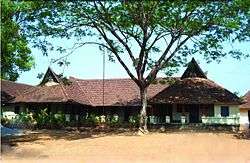
The Pallikkoodam, a school model started by Buddhists was prevalent in the Kingdom of Travancore. This model was later imbibed by Christian missionaries initiated by the then Archbishop of Verapoly, Bernardo (Giuseppe) Baccinelli, O.C.D., paved the way for an educational revolution in Kerala by making education accessible to all, irrespective of caste or religion. Christian missionaries introduced Western education methods to Kerala. Communities such as Ezhavas, Nairs and Dalits were guided by monastic orders (called ashrams) and Hindu saints and social reformers such as Sree Narayana Guru, Sree Chattampi Swamikal and Ayyankali, who exhorted them to educate themselves by starting their own schools. That resulted in numerous Sree Narayana schools and colleges, Nair Service Society schools. The teachings of these saints have also empowered the poor and backward classes to organize themselves and bargain for their rights. The Government of Kerala instituted the Aided School system to help schools with operating expenses such as salaries for running these schools.
Kerala had been a notable centre of Vedic learning, having produced one of the most influential Hindu philosophers, Adi Shankaracharya. The Vedic learning of the Nambudiris is an unaltered tradition that still holds today, and is unique for its orthodoxy, unknown to other Indian communities. However, in feudal Kerala, though only the Nambudiris received an education in Vedas, other castes as well as women were open to receive education in Sanskrit, mathematics and astronomy, in contrast to other parts of India.
The upper castes, such as Nairs, Tamil Brahmin migrants, Ambalavasis, St Thomas Christians, as well as backward castes such as Ezhavas had a strong history of Sanskrit learning. In fact many Ayurvedic Physicians (such as Itty Achudan) were from the backward Ezhava community. This level of learning by non-Brahmin learning was not seen in other parts of India. Also, Kerala had been the site of the notable Kerala School which pioneered principles of mathematics and logic, and cemented Kerala's status as a place of learning.
The prevalence of education was not only restricted to males. In pre-colonial Kerala, women, especially those belonging to the matrilineal Nair caste, received an education in Sanskrit and other sciences, as well as Kalaripayattu, a martial art. This was unique to Kerala, but was facilitated by the inherent equality shown by Kerala society to females and males, since Kerala society was largely matrilineal, as opposed to the rigid patriarchy in other parts of India which led to a loss of women's rights.
The rulers of the princely state of Travancore (were at the forefront in the spread of education. A school for girls was established by the Maharaja in 1859, which was an act unprecedented in the Indian subcontinent. In colonial times, Kerala exhibited little defiance against the British Raj. However, they had mass protests for social causes such as rights for "untouchables" and education for all. Popular protest to hold public officials accountable is a vital part of life in Kerala.
By 1981, the general literacy rate in Kerala was 70 per cent – almost twice the all-India rate of 36 per cent. The rural literacy rate was almost identical, and female literacy, at 66 per cent, was not far behind. The government continued to press the issue, aiming for "total literacy," usually defined as about 95 per cent of the people being able to read and write.
A pilot project began in the Ernakulam region, an area of 3 million people that includes the city of Kochi. In late 1988, 50,000 volunteers fanned out around the district, tracking down 175,000 illiterates between the ages of 5 and 60, two-thirds of them women. Within a year, it was hoped, the illiterates would read Malayalam at 30 words a minute, copy a text at 7 words a minute, count and write from 1 to 100, and add and subtract three-digit numbers. On 4 February 1990, 13 months after the initial canvass, Indian Prime Minister V. P. Singh marked the start of World Literacy Year with a trip to Ernakulam, declaring it the country's first totally literate district. In 2001, Kerala's literacy rate was 91%[23] almost as high as that of China (93%) and Thailand (93.9%).
The following table shows the literacy rate of Kerala from 1951 to 2011, measured every decade:[24]
| Year | Literacy | Male | Female |
|---|---|---|---|
| 1951 | 47.18 | 58.35 | 36.43 |
| 1961 | 55.08 | 64.89 | 45.56 |
| 1971 | 69.75 | 77.13 | 62.53 |
| 1981 | 78.85 | 84.56 | 73.36 |
| 1991 | 89.81 | 93.62 | 86.17 |
| 2001 | 90.92 | 94.20 | 87.86 |
| 2011 | 94.59 | 97.10 | 92.12 |
State policy
In 1957 Kerala elected a communist government headed by EMS Namboothiripad, introduced the revolutionary Land Reform Ordinance. The land reform was implemented by the subsequent government, which had abolished tenancy, benefiting 1.5 million poor households. This achievement was the result of decades of struggle by Kerala's peasant associations. In 1967 in his second term as Chief Minister, EMS again pushed for reform. The land reform initiative abolished tenancy and landlord exploitation; effective public food distribution that provides subsidised rice to low-income households; protective laws for agricultural workers; pensions for retired agricultural laborers; and a high rate of government employment for members of formerly low-caste communities.
Hunger
According to the India State Hunger Index, Kerala is one of the four states where hunger is only moderate. Hunger index score of Kerala is 17.66 and is next only to Punjab. Nation hunger index of India is 23.31.[25]
Opinions
British Green activist Richard Douthwaite interviewed a person who remembers once saying that "in some societies, very high levels – virtually First World levels – of individual and public health and welfare are achieved at as little as sixtieth of US nominal GDP per capita and used Kerala as an example".[26]:310–312 Richard Douthwaite states that Kerala "is far more sustainable than anywhere in Europe or North America".[27] Kerala's unusual socioeconomic and demographic situation was summarized by author and environmentalist Bill McKibben:[28]
Kerala, a state in India, is a bizarre anomaly among developing nations, a place that offers real hope for the future of the Third World. Though not much larger than Maryland, Kerala has a population as big as California's and a per capita annual income of less than $300. But its infant mortality rate is very low, its literacy rate among the highest on Earth, and its birthrate below America's and falling faster. Kerala's residents live nearly as long as Americans or Europeans. Though mostly a land of paddy-covered plains, statistically Kerala stands out as the Mount Everest of social development; there's truly no place like it.[28]
References
- Parayil, Govindan (2000). "Introduction: Is Kerala's Development Experience a Model?". In Govindan Parayil (ed.). Kerala: The Development Experience : Reflections on Sustainability and Replicability. London: Zed Books. ISBN 1-85649-727-5. Retrieved 16 January 2011.
- Franke, Richard W.; Barbara H. Chasin (1999). "Is the Kerala Model Sustainable? Lessons from the Past, Prospects for the Future". In M.A. Oommen (ed.). Rethinking Development: Kerala's Development Experience, Volume I. New Delhi: Institute of Social Sciences. ISBN 81-7022-764-X. Retrieved 16 January 2011.
- "Kerala Model & development". Dawn.com. Archived from the original on 13 April 2010. Retrieved 17 July 2010.
- "KN Raj passes away". Oman Tribune. Archived from the original on 15 July 2011. Retrieved 17 July 2010.
- "Human Development Index rose 21 per cent; Kerala tops chart". CNBC. 21 October 2011.
- "HDI in India rises by 21%: Kerala leads the race". FirstPost. 21 October 2011.
- "COVID-19 in India: State-Wise Estimates of Current Hospital Beds, ICU Beds, and Ventilators" (PDF). Center for Disease Dynamics, Economics & Policy (CDDEP). Retrieved 30 April 2020.
- "STATE-WISE INFANT MORTALITY RATE" (PDF).
- "Morbidity Profiles of Kerala and All-India: An Economic Perspective" (PDF).
- Nair, P. Sadasivan (August 2010). "Understanding Below-replacement Fertility in Kerala, India". Journal of Health, Population, and Nutrition. 28 (4): 405–412. doi:10.3329/jhpn.v28i4.6048. ISSN 1606-0997. PMC 2965333. PMID 20824985.
- "Kerala: A case study". Bill McKibben.
- "Maternal & Child Mortality and Total Fertility Rates Sample Registration System (SRS)" (PDF). Office of Registrar General, India 7 July 2011.
- "health". Kerala Government. Archived from the original on 8 January 2010. Retrieved 24 July 2010.
- "Kerala: the community model (Page No 24)" (PDF). The Economist. Retrieved 25 July 2010.
- "'The Economist' hails Kerala model". The New Indian Express. Retrieved 25 July 2010.
- https://www.theguardian.com/society/2015/jan/06/-sp-universal-healthcare-the-affordable-dream-amartya-sen
- https://www.theatlantic.com/magazine/archive/1998/09/poor-but-prosperous/377206/
- https://www.ted.com/talks/hans_rosling_asia_s_rise_how_and_when/transcript?language=en
- http://www.utne.com/community/theenigmaofkerala.aspx
- "Medical and Public health" (PDF). Kerala Govt. Retrieved 25 July 2010.
- http://nrhm.gov.in/nrhm-in-state/state-wise-information/kerala.html#health_profile Archived 12 May 2016 at the Wayback Machine
- http://www.goodreads.com/book/show/199362.Hope_Human_and_Wild
- "How almost everyone in Kerala learned to read". 2005.
- "Education". Kerala Government. Archived from the original on 26 July 2010. Retrieved 17 July 2010.
- "The India State Hunger Index: Comparisons of Hunger Across States" (PDF). 2008. Archived from the original (PDF) on 14 February 2009.
- Douthwaite R (1999). The Growth Illusion: How Economic Growth has Enriched the Few, Impoverished the Many, and Endangered the Planet. New Society Publishers. pp. 310–312. ISBN 0-86571-396-0. Retrieved 11 November 2007.
- Heinberg R (2004). Powerdown: Options And Actions for a Post-Carbon World. New Society Publishers. p. 105. ISBN 0-86571-510-6. Retrieved 11 November 2007.
- (McKibben 2006).